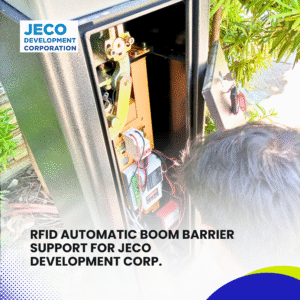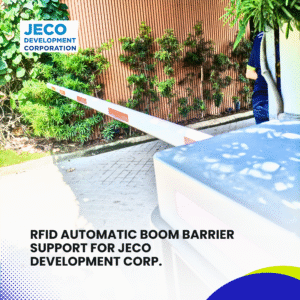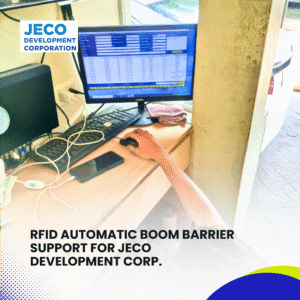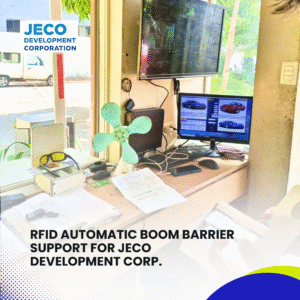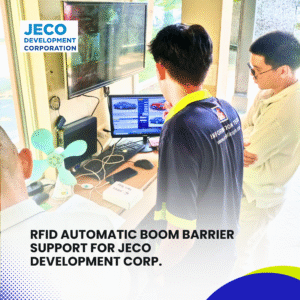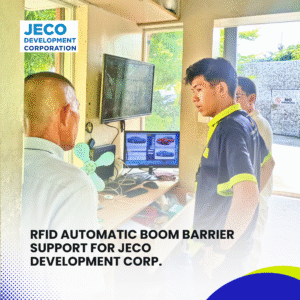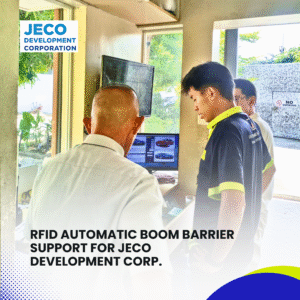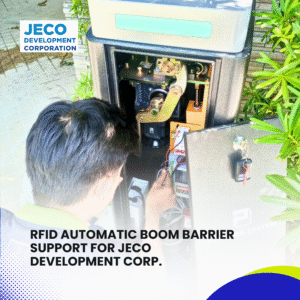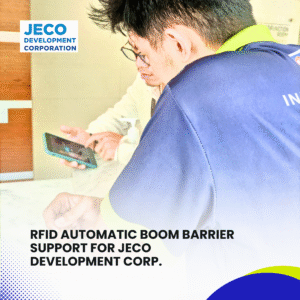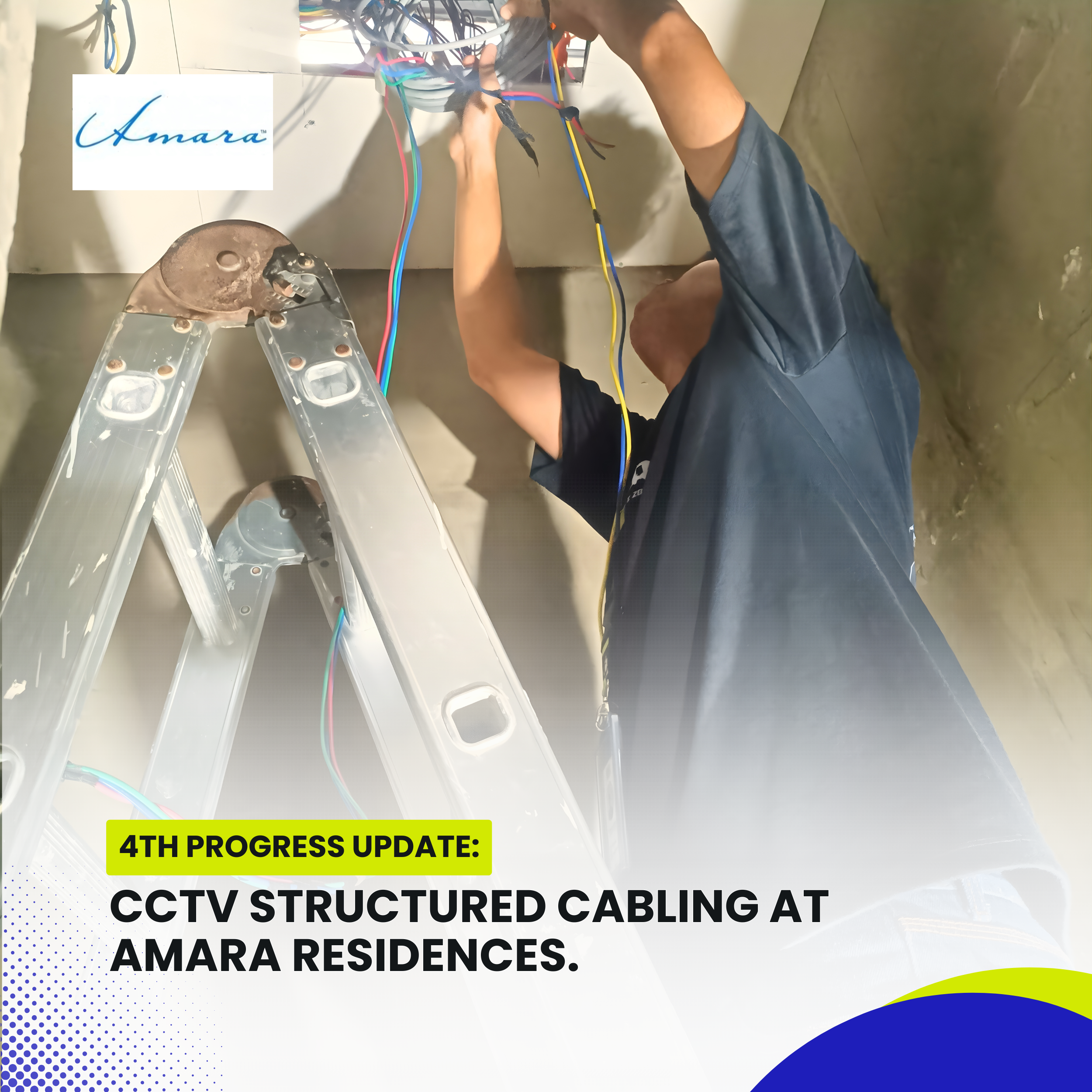AccessPoint Supply and Installation at Santo Niño Village-Final Progress Update. Introduction. Reliable wireless connectivity is essential in today’s homes, supporting daily communication, work, and entertainment needs. To ensure stable and extended network …
RFID AUTOMATIC BOOM BARRIER SUPPORT FOR JECO DEVELOPMENT CORP.
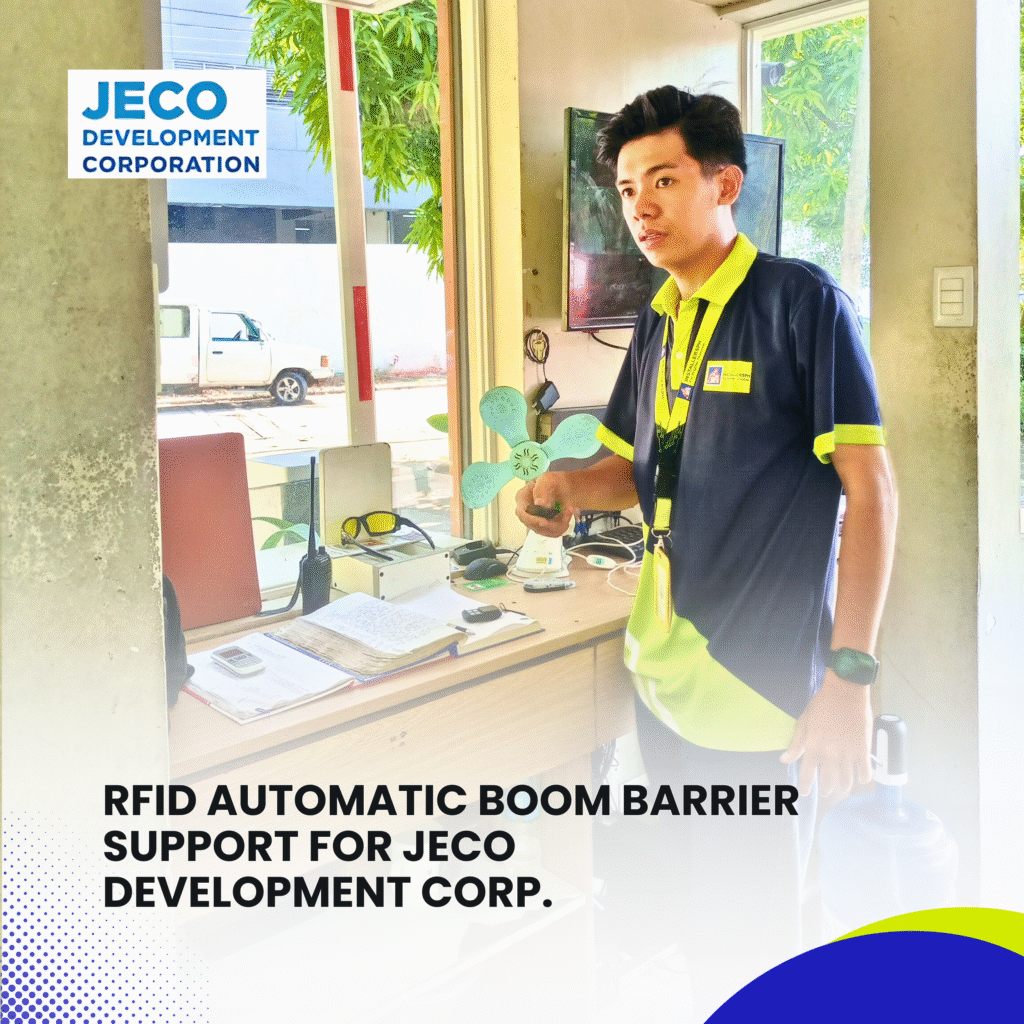
Introduction
In today’s modern security systems, boom barriers equipped with RFID (Radio Frequency Identification) sensors are widely used to automate access at gates, parking lots, and restricted areas. These systems are efficient, but like any technology, they can sometimes face unexpected issues. One such incident recently occurred where a boom barrier at the entrance gate was opening by itself without any vehicle or personnel triggering it. This prompted a thorough investigation by the technical team.
The Issues
The boom barrier was observed to be opening automatically, raising concerns about the security of the premises. Initially, it appeared as if the barrier had a mechanical fault, or perhaps the sensor was malfunctioning. The technical personnel on-site decided to carry out a step-by-step troubleshooting process to identify the root of the problem.
Troubleshooting Process
The first step was to physically inspect the boom barrier for any mechanical or electrical faults. The team opened the casing of the boom barrier to check for loose connections, water damage, or broken components. Surprisingly, they found no visible damage or defects. The boom arm and the motor were working as expected, and the wiring seemed intact.
With no issues found on the hardware side, attention turned to the software and system records. The technician proceeded to the control room to check the computer system that manages the barrier’s RFID logs and access records. There, he noticed something unusual in the data: the system had been registering multiple RFID scans even when there were no vehicles present.
The Discovery
Upon closer inspection, it was discovered that the system was continuously detecting RFID stickers, which caused the barrier to open. The real breakthrough came when the technician realized that there was a cabinet near the sensor area containing multiple unused RFID stickers. These stickers, although not in active use, were close enough to the sensor to be detected as valid entries.
The RFID sensor had a wide enough range that it was unintentionally picking up signals from these stickers inside the cabinet. As a result, the system interpreted their presence as vehicles trying to enter and automatically opened the boom barrier.
The Solution
To resolve the issue, the technical team removed all the unused RFID stickers from the cabinet and relocated them to an area far from the sensor’s detection range. After this change, they closely monitored the boom barrier’s behavior and confirmed that it no longer opened on its own. The problem had been successfully resolved without any hardware replacement or software changes.
Conclusion
This incident highlights the importance of understanding how RFID systems work and the potential for interference from unintended sources. While RFID-based barriers are designed for convenience and security, their sensitivity can sometimes lead to unforeseen challenges. In this case, a simple oversight—storing unused RFID stickers too close to a sensor—resulted in a technical issue that appeared more serious than it was.
It’s a reminder for security teams and maintenance personnel to consider all possibilities during troubleshooting, including environmental and storage factors that might affect electronic systems. Proactive checks and awareness of RFID behavior can prevent similar issues in the future, ensuring smooth and secure operation at all times.
Case Studies
CCTV Site Inspection at Guadalupe, Nichols Park subdivision. Introduction. Ensuring the reliability and performance of surveillance systems is essential in maintaining safety and security within residential communities. On this day, InstallersPH IT …
CCTV Structured Cabling at Amara Residences- 4th Progress Update.
CCTV Structured Cabling at Amara Residences- 4th Progress Update. Introduction. The fourth progress milestone of the project focuses on the installation and configuration of the network infrastructure within the client’s facility. With …

